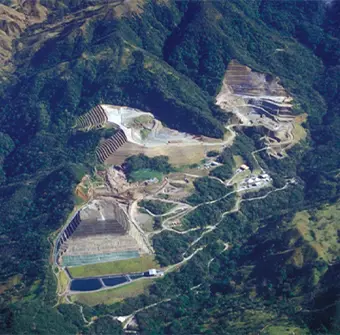First presented at AusIMM's Mine Waste and Tailings Conference 2023
Undrained shear strength ratios (USRs) are commonly adopted within the industry to characterise tailings strength, allowing for straightforward statistical analysis. In situ, the peak undrained shear strength (𝑠𝑢,𝑝𝑒𝑎𝑘) is typically assessed using cone penetration test (CPT) data, which is normalised by the inferred effective vertical stress (𝜎’𝑣) at the time of testing to define the USR. A strong understanding of 𝜎’𝑣, and consequently piezometric pore water pressure (PWP) profile, seepage and pore fluid density, is key to developing representative USRs. However, from CPT, 𝑠𝑢,𝑝𝑒𝑎𝑘 is a function of only corrected cone resistance, total vertical stress and cone factor, 𝑁𝑘𝑡. As such 𝑠𝑢,𝑝𝑒𝑎𝑘 is estimated with reasonable confidence from the CPT data, independent of pore water effects/understanding.
This paper looks at considerations for defining undrained strengths within tailings from cone penetration test data, discussing different approaches to characterising strength using statistical methods and its influence on stability assessments. This paper highlights the sensitivity of USR to varying interpretations of piezometric PWP. It presents an equivalent approach to represent the tailings’ undrained strength using total stresses, which removes the need to understand the PWP profile. The assessment applies a stochastic model fitting process to the total stress approach to develop a statistical representation of the tailings’ strength, such that the stability analyses can adopt a single characteristic strength in stability analyses, similar to the USR approach. The process followed to develop a statistical representation of tailings strength using the total stress approach is worked through as an example. This procedure is not intended to replace the USR approach but to provide an alternative screening method when uncertainty surrounds the in situ PWP conditions within tailings.
Authors:
- J. Rola | Principal Consultant, SRK Consulting
- J. Eldridge | Consultant, SRK Consulting
- P. Barbieri | Research Assistant, The University of Western Ontario


